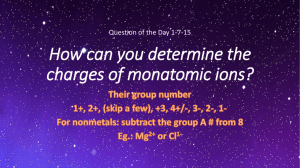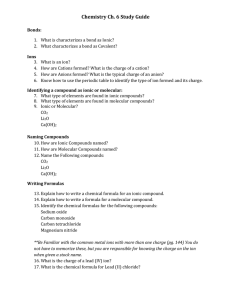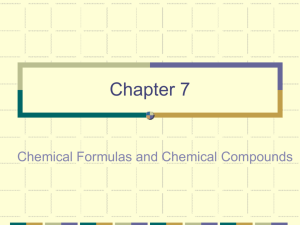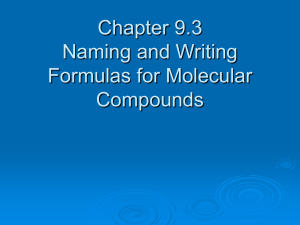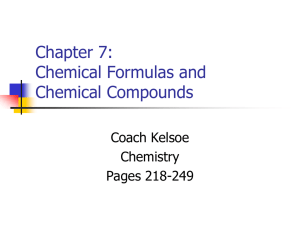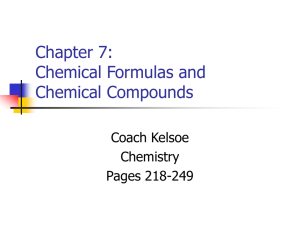File
advertisement
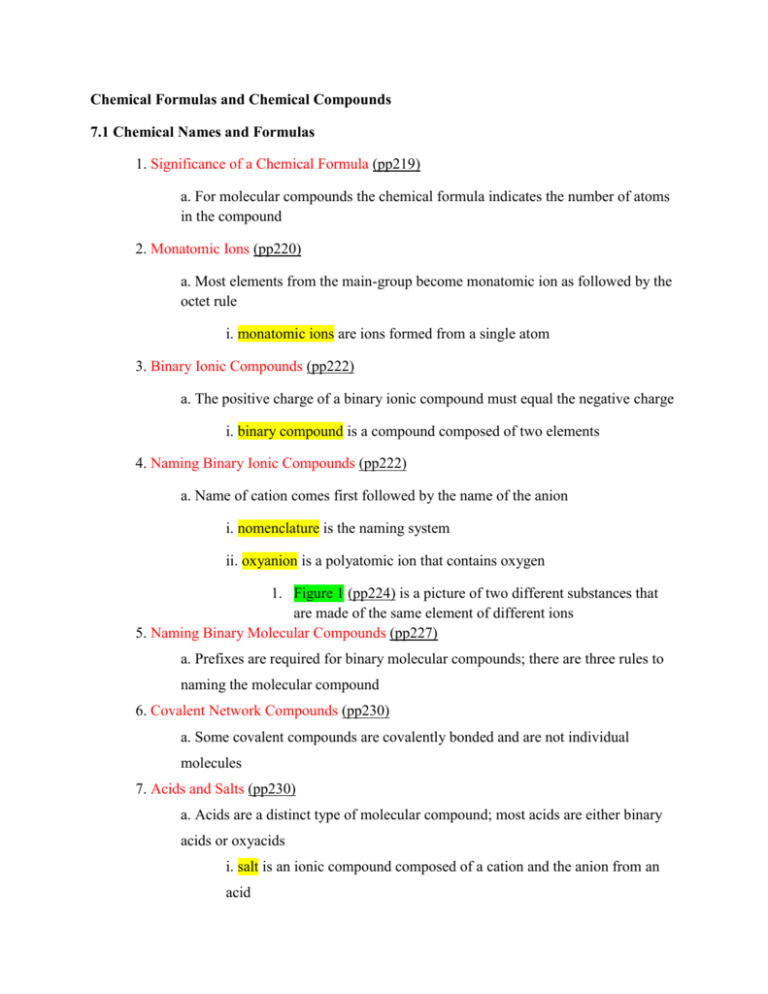
Chemical Formulas and Chemical Compounds 7.1 Chemical Names and Formulas 1. Significance of a Chemical Formula (pp219) a. For molecular compounds the chemical formula indicates the number of atoms in the compound 2. Monatomic Ions (pp220) a. Most elements from the main-group become monatomic ion as followed by the octet rule i. monatomic ions are ions formed from a single atom 3. Binary Ionic Compounds (pp222) a. The positive charge of a binary ionic compound must equal the negative charge i. binary compound is a compound composed of two elements 4. Naming Binary Ionic Compounds (pp222) a. Name of cation comes first followed by the name of the anion i. nomenclature is the naming system ii. oxyanion is a polyatomic ion that contains oxygen 1. Figure 1 (pp224) is a picture of two different substances that are made of the same element of different ions 5. Naming Binary Molecular Compounds (pp227) a. Prefixes are required for binary molecular compounds; there are three rules to naming the molecular compound 6. Covalent Network Compounds (pp230) a. Some covalent compounds are covalently bonded and are not individual molecules 7. Acids and Salts (pp230) a. Acids are a distinct type of molecular compound; most acids are either binary acids or oxyacids i. salt is an ionic compound composed of a cation and the anion from an acid 1. Figure 2 (pp231) shows three common laboratory acids: nitric acid, hydrochloric acid, and sulfuric acid 8. What is the significance of a chemical formula? a. it indicates the relative number of atoms of each kind in a chemical compound 9. Write formulas for the compound formed between the following: a. Aluminum and bromine: AlBr3 b. Sodium and oxygen: Na2O c. Magnesium and iodine: MgI2 d. Pb2+ and O2-: PbO e. Sn2+and I-: SnI2 f. Fe3+ and S2-: Fe2S3 g. Cu2+ and NO-3: Cu(NO3)2 h. NH+4 and SO2- 4: (NH4)2SO4 10. Name the following compounds by using the Stock system: a. NaI: Sodium(I) iodide b. MgS: Magnesium (II) sulfide c. CaO: Calcium (II) oxide d. K2S: Potassium (I) sulfide e. CuBr: Copper (I) bromide f. FeCl2: Iron (II) Chloride 11. Write formulas for each of the following compounds: a. sodium hydroxide: NaOH b. lead(II) nitrate: Pb(NO3)2 c. iron(II) sulfate: Fe(SO4) d. diphosphorus trioxide: P2O3 e. carbon diselenide: CSe2 f. acetic acid: CH3COOH g. chloric acid: HClO3 h. sulfurous acid: H2SO3
